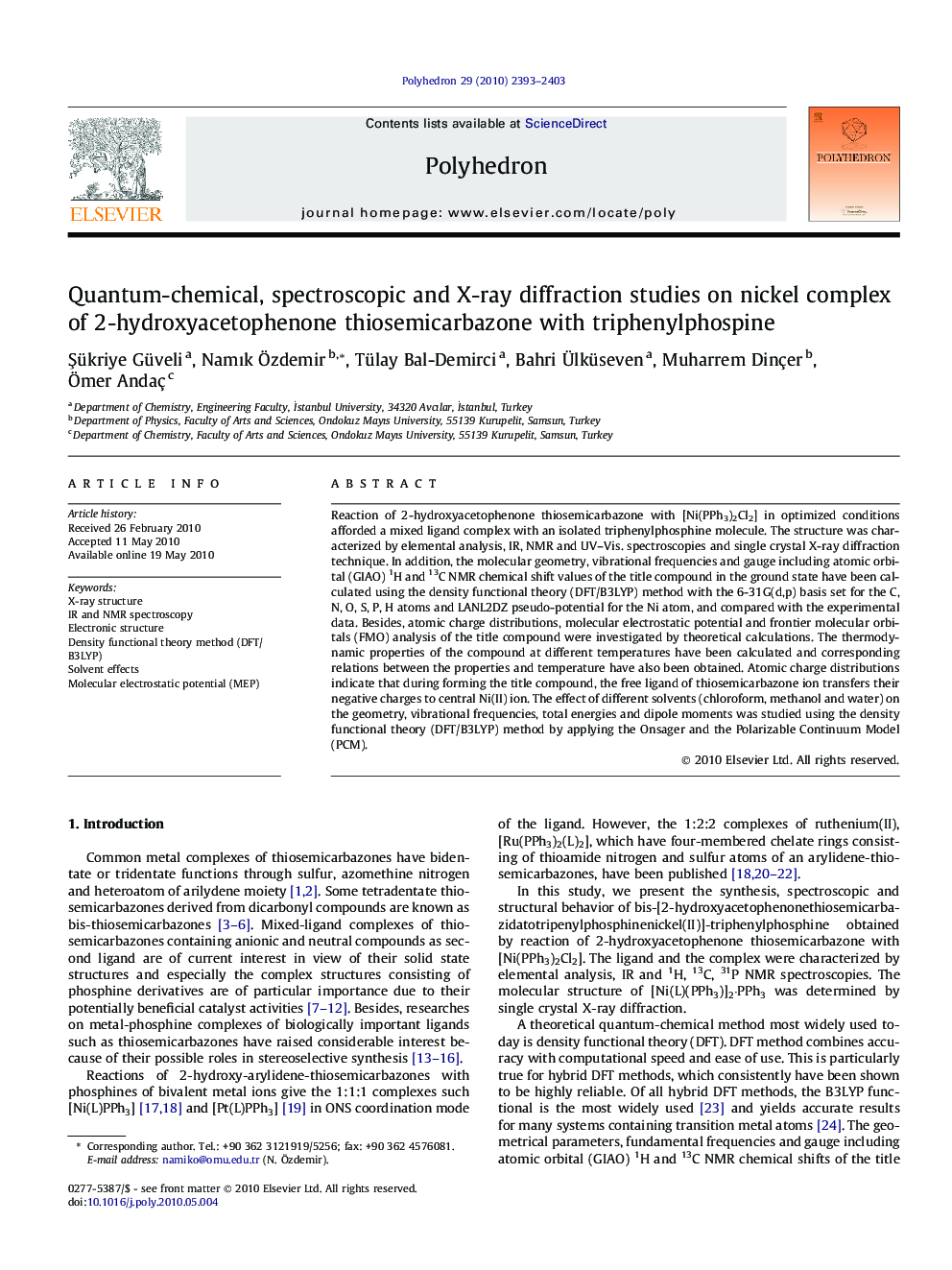| Article ID | Journal | Published Year | Pages | File Type |
|---|---|---|---|---|
| 1334871 | Polyhedron | 2010 | 11 Pages |
Reaction of 2-hydroxyacetophenone thiosemicarbazone with [Ni(PPh3)2Cl2] in optimized conditions afforded a mixed ligand complex with an isolated triphenylphosphine molecule. The structure was characterized by elemental analysis, IR, NMR and UV–Vis. spectroscopies and single crystal X-ray diffraction technique. In addition, the molecular geometry, vibrational frequencies and gauge including atomic orbital (GIAO) 1H and 13C NMR chemical shift values of the title compound in the ground state have been calculated using the density functional theory (DFT/B3LYP) method with the 6-31G(d,p) basis set for the C, N, O, S, P, H atoms and LANL2DZ pseudo-potential for the Ni atom, and compared with the experimental data. Besides, atomic charge distributions, molecular electrostatic potential and frontier molecular orbitals (FMO) analysis of the title compound were investigated by theoretical calculations. The thermodynamic properties of the compound at different temperatures have been calculated and corresponding relations between the properties and temperature have also been obtained. Atomic charge distributions indicate that during forming the title compound, the free ligand of thiosemicarbazone ion transfers their negative charges to central Ni(II) ion. The effect of different solvents (chloroform, methanol and water) on the geometry, vibrational frequencies, total energies and dipole moments was studied using the density functional theory (DFT/B3LYP) method by applying the Onsager and the Polarizable Continuum Model (PCM).
Graphical abstract[Ni(C9H9N3OS)(C18H15P)]2·C18H15P has been crystallized from the reaction of 2-hydroxyacetophenone thiosemicarbazone with [Ni(PPh3)2Cl2] and characterized by means of elemental analysis, IR and 1H, 13C, 31P NMR spectroscopies. The crystal structure of the complex has been determined by X-ray single crystal diffraction. Electronic structure is studied by the DFT method, and the results are compared with the experimental data.Figure optionsDownload full-size imageDownload as PowerPoint slide
